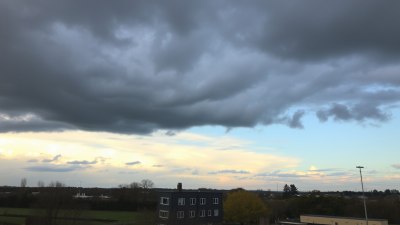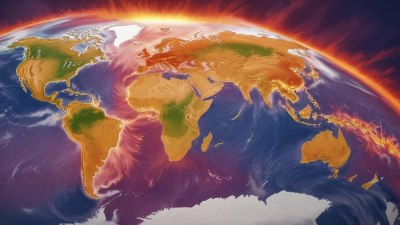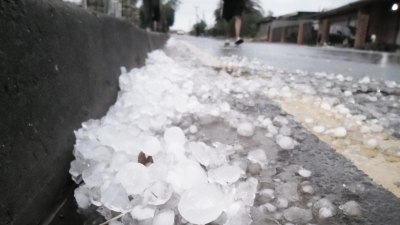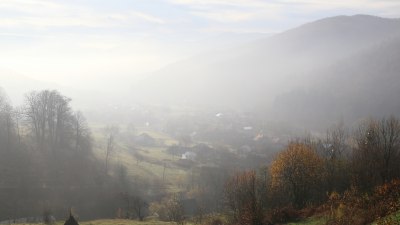What Causes Unseasonable Warm Spells
Explore the scientific causes behind unseasonable warm spells and their implications on climate and weather patterns.

Unseasonable warm spells, periods of uncharacteristically high temperatures for a given time of year, are phenomena that have captured the attention of climatologists, meteorologists, and the public alike. Understanding the causes behind these events is crucial for predicting weather patterns and preparing for their socio-economic impacts. Beyond anecdotal experiences of unseasonably warm days, a variety of scientific factors contribute to these temperature anomalies.
Natural Climate Variability
Natural climate variability plays a significant role in unseasonable warm spells. These variations occur due to several interconnected systems, including ocean currents, atmospheric pressure systems, and seasonal changes in solar radiation. For instance, phenomena like El Niño and La Niña can lead to shifts in weather patterns globally, influencing local climates in unexpected ways. El Niño, characterized by warmer ocean temperatures in the Pacific, typically results in milder winters in many regions, which can induce unseasonably warm days during traditionally cold months.
Jet Stream Patterns
The jet stream is a fast-flowing river of air located high in the atmosphere, which significantly influences weather patterns. Its position and strength can dictate the movement of weather systems. When the jet stream dips southward, it can lead to cold air outbreaks; conversely, when it shifts northward, it allows warmer air from the tropics to spill into higher latitudes, resulting in unseasonably warm weather. This shifting of the jet stream is often influenced by various factors, including ocean temperatures and atmospheric pressure anomalies.
Urban Heat Islands
Urbanization contributes to unseasonable warmth through the urban heat island (UHI) effect. Cities tend to have higher temperatures than surrounding rural areas due to human activities, concrete, asphalt, and minimal vegetation. This localized warming can exacerbate overall temperature increases during warm spells. For example, during a typically cool spring, a major city may experience significantly higher temperatures as warmth gets trapped in urban environments due to poor airflow, high building density, and thermal mass of construction materials.
Climate Change Impacts
Climate change is reshaping weather patterns globally, leading to an increase in the frequency and intensity of extreme weather events, including unseasonable warm spells. As greenhouse gas emissions trap heat in the atmosphere, the baseline temperatures rise, making extreme temperature variations more likely. Studies indicate that as the planet warms, severe weather patterns become more pronounced. For instance, the warming of oceans alters atmospheric circulation, provoking extreme heat events around the world.
Atmospheric Blocking Patterns
Blocking patterns are phenomena where the jet stream becomes stationary for extended periods, leading to prolonged periods of specific weather conditions. These blocks can cause warm air masses to linger over areas longer than usual, contributing to unseasonably warm temperatures. Seasonal patterns may originally suggest cooler weather, yet sustained high-pressure systems can keep temperatures elevated. This blocking can occur due to variations in sea surface temperatures, particularly when there are warm pockets in the ocean that can influence atmospheric dynamics.
Seasonal Lag Effects
Seasonal lag refers to the time differences between peak solar heating and temperature peak on land regions. Since land surfaces warm and cool more rapidly than water bodies, there can be a delay in seasonal temperature returns to the norm. If a region has been experiencing warmer-than-usual conditions, residual warmth can linger into traditionally cooler months, leading to unseasonable warmth. These lag effects highlight how previous months’ weather can significantly influence current temperatures.
Connections to Weather Systems
The interactions between different weather systems can also lead to unusual warmth. For instance, a warm front moving in from the south can bring unusually high temperatures, while at the same time a low-pressure system could create conditions for rain. The combination of these systems can lead to periods of warmth even during months typically associated with cooler weather.
Microclimates
Microclimates are smaller areas within a larger geographical region that have distinct climatic conditions. These can arise due to variations in elevation, land use, vegetation cover, and urban development. Microclimates can experience unseasonable warmth due to localized factors that differ from surrounding areas. For example, a valley may trap heat or an area with intensive agriculture may retain warmth more effectively than its surroundings.
The Role of Soil Moisture and Snow Cover
Soil moisture and snow cover are critical factors impacting temperature. Wet soils can inhibit warming, while dry soils can heat up quickly. A lack of snowfall in winter can often precede periods of warming; if snow cover is low, the ground absorbs more solar energy, leading to increased temperatures. Thus, changes in soil and snow conditions can be direct contributors to unseasonable warmth.
Monitoring and Prediction
Monitoring efforts are essential for understanding the mechanisms behind unseasonable warm spells. Meteorological agencies utilize a combination of satellite, ground-level, and climate models to analyze and predict these warm periods. The interplay between climate data and forecasting models helps scientists understand and predict when unseasonable warm spells are likely to occur, providing critical information for agriculture, public health, and energy management.
Furthermore, advances in climate science and technology allow for higher resolution models that capture regional variations more accurately. As predictive models improve, so too does the accuracy of forecasts regarding unseasonable weather, giving communities time to adapt and prepare.
Conclusion
Unseasonable warm spells result from a complex interplay of natural variability, climate change, urban influences, and atmospheric dynamics. As awareness of these phenomena grows, it becomes increasingly clear that understanding the causative factors is crucial for adaptation in a changing climate. With the alarming pace of global warming, the potential for more frequent and intense unseasonable warm spells raises significant challenges for meteorological predictions, agricultural practices, and infrastructure resilience. As we advance into an uncertain future, continuous research, monitoring, and adaptive strategies will play vital roles in mitigating the adverse effects of these temperature extremes.











